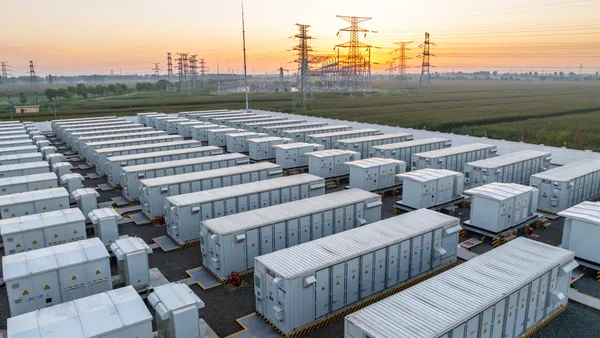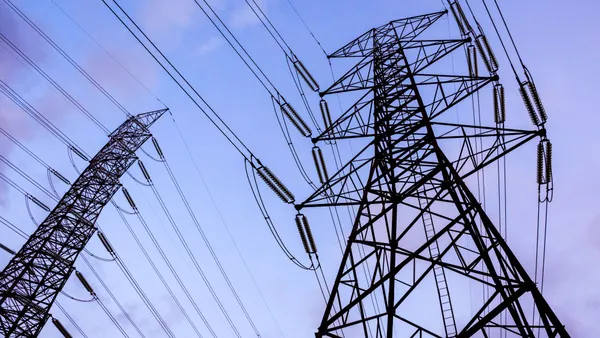Dive Brief:
-
Industry players in California are planning to create a 550 MW distributed clean power plant, based off a network of hundreds of thousands of California homes and the millions of smart devices within. The power plant will serve both as a model for the clean energy grid of the future, as well as a way to reduce the risk of blackouts next summer, according to OhmConnect CEO Cisco DeVries.
-
Meanwhile, Southern California Edison has signed contracts for an additional 590 MW of battery energy storage in a bid to boost electric system reliability, bringing the amount of battery storage it has procured to more than 2 GW, the utility announced Monday.
-
"It's paramount that we achieve full reliability," California Energy Commission Chair David Hochschild said at a press conference announcing the virtual power plant Monday, especially given the state's push to electrify vehicles, rails and buildings, now that 40 cities in the state have adopted some form of an electrification preference or mandate for new construction.
Dive Insight:
The focus on bolstering grid reliability in California comes in light of the possibility of capacity shortfalls over the next few years, as well as rolling blackouts that affected the state this August during a record-breaking heatwave.
The state is taking a number of actions to promote reliability, Hochschild said, including a tenfold increase in the amount of energy storage going online next year, new efficiency and load management standards and procuring more clean energy resources.
"There's not one silver bullet here — it's really silver buckshot," Hochschild said, adding that the planned distributed clean power plant is an important piece of that.
SCE's storage procurements are also part of a broader reliability solution.
SCE kicked off a bid for system reliability resources last year following a California Public Utilities Commission (CPUC) decision requiring the utility to procure nearly 1.2 GW of capacity that could come online between 2021 and 2023. The utility's own analysis has indicated that the state needs to add 30 GW of utility-scale storage and 10 GW of distributed storage to meet its carbon goals.
Earlier this year, SCE announced plans to procure a package of battery resources totaling 770 MW/3,080 MWh, as part of that effort to address potential capacity shortfalls in the state, especially as several gas plants are slated to retire over the next few years.
The new slate of contracts includes three utility-scale lithium-ion battery projects, totaling 585 MW as well as a 5 MW demand response project that will draw energy from customer-owned storage resources.
"Bringing more utility-scale battery storage resources online will improve the reliability of the grid and further the integration of renewable generation resources, like wind and solar, into the grid," said William Walsh, vice president of energy procurement and management at SCE, in a press release.
All the projects are subject to CPUC approval and are scheduled to come online by August 2022 and 2023.
The 550 MW distributed power plant, meanwhile, is being developed by Sidewalk Infrastructure Partners along with OhmConnect, and is slated to be the largest distributed clean power plant in North America. The plant could provide 5 GWh of energy conservation at scale, the equivalent of not burning 3.8 million pounds of coal, the companies say.
Following the August blackouts, California regulators identified demand response measures as an important tool to prevent similar outages in the future; between Aug. 13 and Aug. 20, OhmConnect was able to reduce energy usage by nearly one GWh, and compensated customers $1 million to do so.
Although federal and state policies make it clear that a reduction in a kWh is the same as the production of a kWh and should be treated the same in the market, it's been hard to translate that into a utility-scale, reliable format, DeVries said at the press conference.
And OhmConnect doesn't think this is just a California phenomenon — they're planning to do some work in Texas next year, and eventually see how the technology can be spread across the country, especially where more renewables are coming online and grid operators are facing the challenges of intermittency and changing weather.














